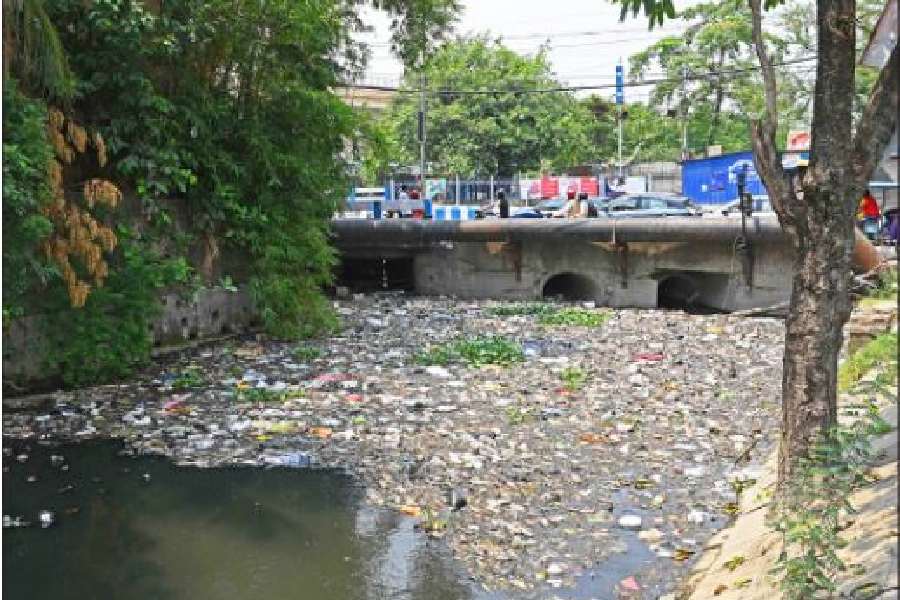The Assembly standing committee on municipal affairs and urban development has red-flagged a huge number of plastic and styrofoam products choking the mouth of a canal in southeastern Kolkata that could block the flow of rainwater and trigger waterlogging in monsoon.
During an inspection of some canals in the city on Thursday, committee members expressed concern about the filling up of a nayanjuli (water body) along EM Bypass, near the Avidipta crossing. The water body acted as a link between two canals and helped drain water from one into another.
The members recommended a new underground passage be built as an alternative.
A resident of the area, who settled there about two decades ago, said there were scores of such water bodies along the Bypass that have been filled up over the years as the road expanded.
The water bodies acted as reservoirs of rainwater and prevented waterlogging. Their absence is now costing residents dearly, forcing the civic authorities to build new drainage pumping stations spending crores of rupees.
The presence of plastic and styrofoam that has blocked the mouth of the Guniagachhi canal, which drains out water from Mukundapur, Nayabad, New Garia and Sonarpur, among other places, is ubiquitous across the city.
On Saturday, The Telegraph spotted plastic blocking other canals that cut across EM Bypass.
“We have found floating material like plastic in a canal off EM Bypass. This could affect the flow of water through the canal. The floating material will be cleaned soon,” said Debashis Kumar, MLA from Rashbehari and a member of the committee.
Four members conducted Thursday’s inspection. Besides Kumar, Debabrata Majumdar, MLA from Jadavpur; Tapas Chatterjee, MLA from Rajarhat New Town; and Niladri Sekhar Dana, MLA from Bankura were present.
Majumdar said they recommended that large drains be built under the service road of EM Bypass. “This will act as a passage for the water in the canal. The drain can connect two canals just like the water body did,” he said.
The recommendations were made verbally.
Chatterjee, chairperson of the standing committee, said the members would meet soon to file a report. “We will send our recommendations to the urban development and municipal affairs department,” he said.
Officials of the Kolkata Municipal Corporation (KMC) and the state irrigation department accompanied the members during the inspection.
Waterlogging is regular in areas on the east of EM Bypass, especially in Mukundapur, Nayabad, New Garia, Panchasayar and neighbouring places. Every monsoon, the area gets flooded on several days, forcing residents to skip office and children to miss school.
The neighbourhood has some of Kolkata’s largest hospitals. Waterlogged streets make things difficult for patients and their families visiting any of the several hospitals because transport options dry up and the few autorickshaws or rickshaws that operate demand fares several times the original.
The filling up of the water body is an example of “bad urbanisation” that is plaguing almost all Indian cities, said Chandni Singh, a lead author of assessment report 6 of the Intergovernmental Panel on Climate Change (IPCC).
“This is something that many Indian cities have done. But the authorities must ensure that no natural drainage is built over. If possible, the civic authorities should remove some of the infrastructure,” she said.
“Governments have to realise that the climate of yesterday’s Kolkata and tomorrow’s Kolkata are going to be different. There are indications that rainfall patterns will change and there will be very intense rain over a short period,” Singh said.
The presence of plastic in canals also shows that banned items were still in use across the city. People are using them in abundance and not disposing of them responsibly.
